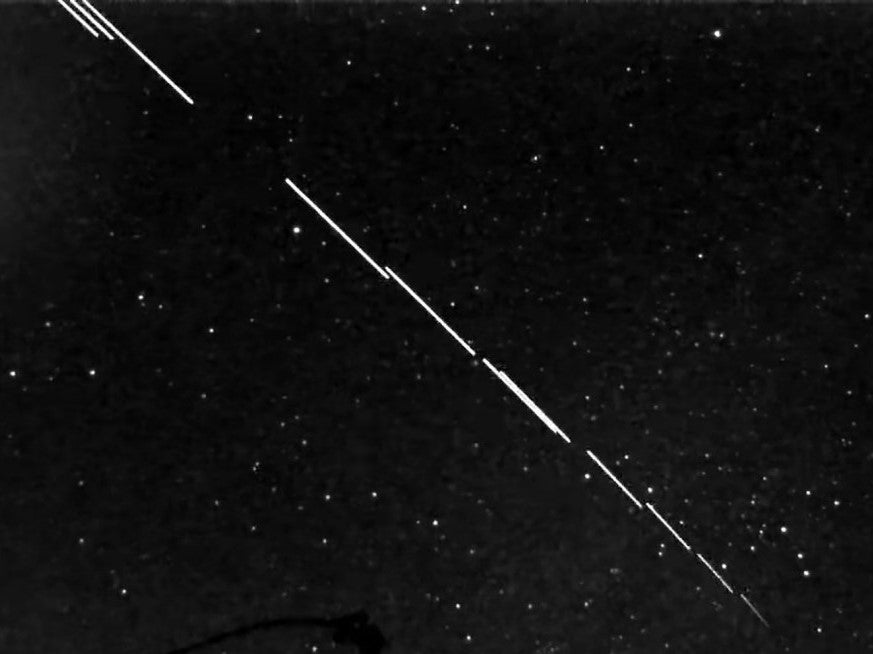SpaceX Starlink launch: How to watch live stream of Elon Musk’s controversial internet project
Satellite network will deliver ‘near global internet coverage to the populated world by 2021’

Your support helps us to tell the story
From reproductive rights to climate change to Big Tech, The Independent is on the ground when the story is developing. Whether it's investigating the financials of Elon Musk's pro-Trump PAC or producing our latest documentary, 'The A Word', which shines a light on the American women fighting for reproductive rights, we know how important it is to parse out the facts from the messaging.
At such a critical moment in US history, we need reporters on the ground. Your donation allows us to keep sending journalists to speak to both sides of the story.
The Independent is trusted by Americans across the entire political spectrum. And unlike many other quality news outlets, we choose not to lock Americans out of our reporting and analysis with paywalls. We believe quality journalism should be available to everyone, paid for by those who can afford it.
Your support makes all the difference.SpaceX plans to launch its a new batch of Starlink satellites on Thursday, despite resistance from the astronomy community against Elon Musk’s controversial space internet project.
If successful, the mission will bring the total number of Starlink satellites in low-Earth orbit to around 800. SpaceX plans to ultimately deliver tens of thousands of Starlink satellites into orbit over the next few years to form a mega constellation capable of beaming high-speed internet down to Earth.
The network has already been successfully tested on a limited scale, with SpaceX targeting service in northern US and Canada before the end of the year.
The private space firm hopes to expand this to “near global coverage of the populated world by 2021”, offering speeds greater than 100 megabytes per second (Mbps).
“With performance that far surpasses that of traditional satellite internet, and a global network unbounded by ground infrastructure limitations, Starlink will deliver high-speed broadband internet to locations where access has been unreliable, expensive, or completely unavailable,” states Starlink’s mission statement.
The manner in which the satellites are deployed means that they are often clearly visible in the days and weeks following the launch as long long trails of lights in the sky.
Earlier this year, hundreds of astronomers warned that the Starlink network could disrupt observations of the night’s sky and potentially hinder scientific progress.
The report by the Satellite Constellations 1 (SatCon1) workshop stated: “We find that the worst-case constellation designs prove extremely impactful to the most severely affected science programs.”
SpaceX has taken measures in an attempt to reduce their visibility, such as tilting the solar panels and painting their base black, though such mitigation strategies may not be enough according to some scientists.
“Even if that works, the satellite trails themselves will clearly be in the data – complicating the data analysis and limiting discoveries,” said Professor Tony Tyson from the University of California, Davis, at the time of the report’s publication.
“With tens of thousands of low-Earth orbit satellites, we find that generally no combination of mitigations can completely avoid the impacts of satellite trails on the science programs of the coming generation of optical astronomy facilities.”
The latest launch is scheduled for 2.19pm EDT (7.19pm BST) from the Kennedy Space Center in Cape Canaveral, Florida, on Thursday.
There is a 60 per cent chance of weather conditions being favourable for the launch, according to the 45th Weather Squadron, despite Hurricane Sally causing disruption further west in Florida.
“Showers and storms are possible across the Spaceport with the initial development of the east coast sea breeze early this afternoon, with the potential for a few storms to creep back late in the day as winds become more south-southwesterly,” the Air Force weather agency wrote in a forecast for the launch.
“While the highest chances look to be after the launch window, earlier development cannot be ruled out.”
A live stream of the launch will be available on SpaceX’s website, as well as the firm’s official YouTube page.

Join our commenting forum
Join thought-provoking conversations, follow other Independent readers and see their replies
Comments